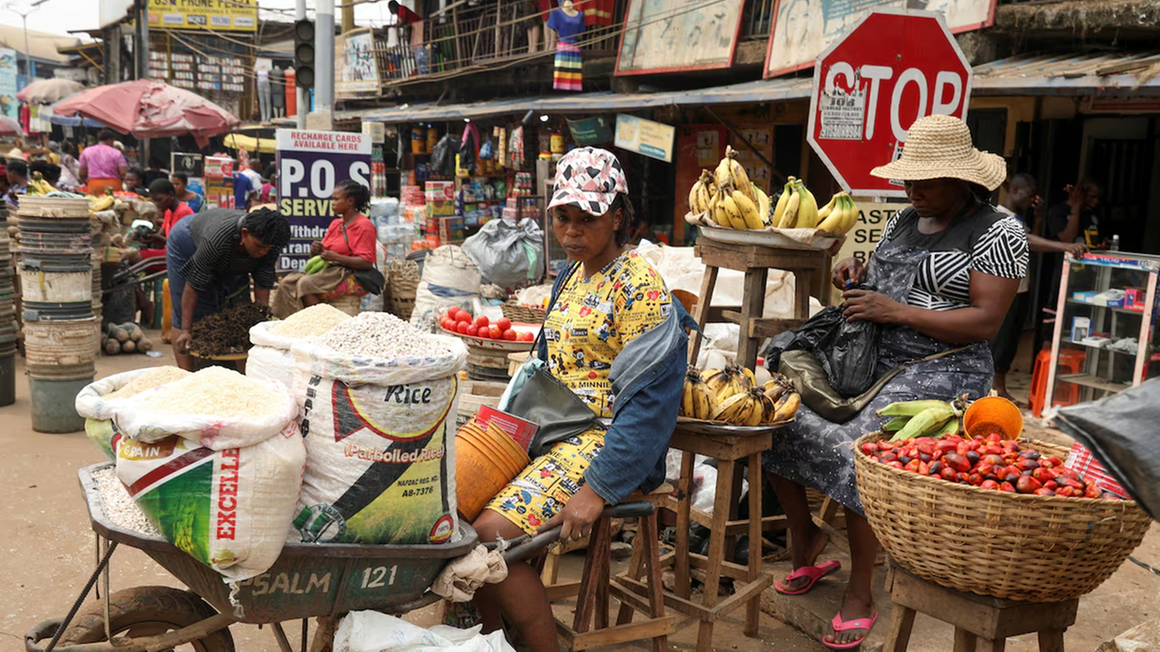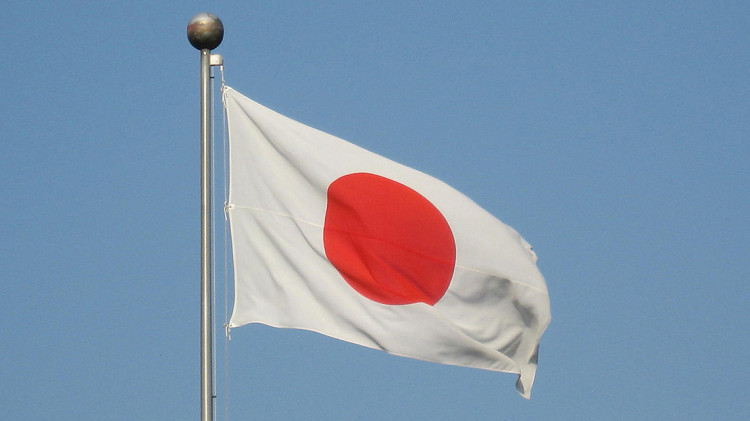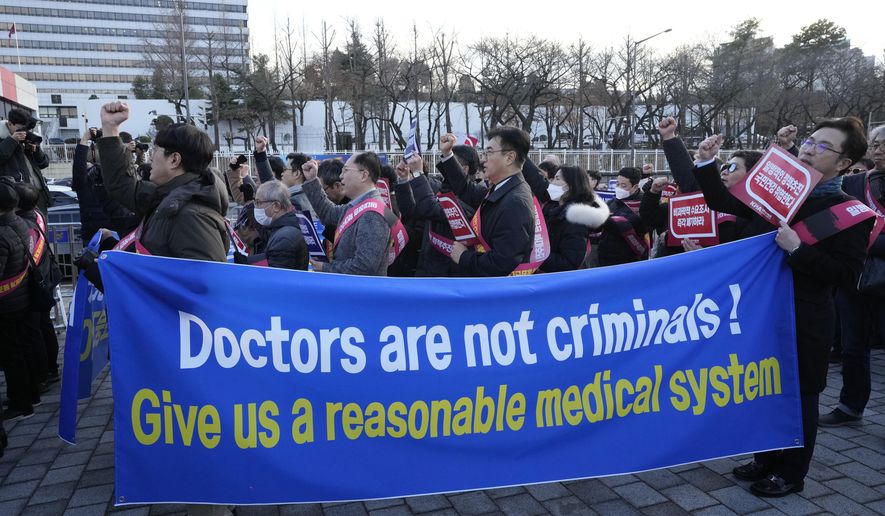Gen Ogolla: Badass combat pilot who sought peace via diplomacy
General Ogolla died on Thursday afternoon after a Kenya Defence Forces (KDF) helicopter he was travelling in crashed in Sindar, Elgeyo-Marakwet County in Northern Kenya.

General Francis Ogolla addressing participants during change of guard ceremony at Ulinzi Sports Complex Langata in Nairobi, Kenya on May 5, 2023.
Summary
Gen Ogolla lauded the positive impact of the East African Regional Force, which was deployed in 2022 with the mandate to restore peace in Eastern DRC.
Ogolla was trained in France and United States in specialised military technique and air warfare and is also a graduate of ÉcoleMilitaire de Paris and US air force, as well as the National Defence College of Kenya.
General Ogolla’s commitment to a peaceful region has been lauded by the US National Security advisor Jake Sullivan
The death of Kenya's military chief General Francis Omondi Ogolla may have robbed the wider East African region of a strict soldier who top his skill with diplomacy in search for peace.
Gen Ogolla's departure, just ten days shy away to mark one year in office, abruptly ended his commitment in the deployment of Kenyans troops in peace-keeping mission in the continent, which has been acknowledged by leaders who have eulogised him.
Among them, was the African Union Transition Mission in Somalia (Atmis), who posted on X: “Atmis has received with shock and sadness the news of the death of Kenya’s CDF, Gen Ogolla. Atmis extends its heartfelt condolences to the government and the people of Kenya, relatives and friends during this time of mourning.”
General Ogolla’s commitment to a peaceful region has also been lauded by the US National Security adviser Jake Sullivan.
“During his nearly four decades of service, General Ogolla was a valuable partner in Kenyan-US relations, dedicating his life to making his country — and all of us — safer and more secure. From combatting terrorist threats posed by Al Shabaab to leading efforts to bolster regional cooperation across a range of domains, he has left an indelible mark,” Mr Sullivan said.
He noted that throughout his career, the US enjoyed a close relationship with General Ogolla, “who received pilot training alongside our own officers in the US and developed strong relationships with US diplomatic and defence leaders, including Secretary of Defence Lloyd J. Austin III, Ambassador Meg Whitman, and Africa Command Commander General Langley.”
General Ogolla died on Thursday afternoon after a Kenya Defence Forces (KDF) helicopter he was travelling in crashed in Sindar, Elgeyo-Marakwet County in Northern Kenya.
Read: Kenya army chief involved in deadly chopper crash
The plane was carrying 12 military men and women and 10 of them perished in the accident.
The other victims were Brigadier Swale Saidi, Colonel Duncan Keittany, Lieutenant-Colonel David Sawe, Major George Benson Magondu, Captain Sora Mohamed, Captain Hillary Litali, Senior Sergeant John Kinyua Mureithi, Sergeant Cliphonce Omondi, and Sergeant Rose Nyawira.
President William Ruto announced three days of national mourning, beginning Friday, in honour of General Ogolla and the nine others.
After assuming office as Chief of the Defence Forces (CDF) in April 2023, Gen Ogolla hit the ground running, inviting troops in their bases locally and in the region, to offer a word of encouragement and also to check on their welfare.

Gen Francis Ogolla carries a Bible during his swearing in ceremony as Chief of the Defence Forces at state house Nairobi, Kenya on April 29, 2023. PHOTO | PCS
In May last year, Gen Ogolla joined the East African Community (EAC) military chiefs for an extraordinary meeting in Bujumbura to discuss the security situation in the eastern Democratic Republic of Congo (DRC).
Gen Ogolla was in charge at a time Kenya was scaling down its troops in Somalia, Eastern DRC and other parts of East Africa.
He lauded the East African Community Regional Force (EACRF), which was deployed in 2022 with the mandate to restore peace in Eastern DRC. He noted that the force gradually created accessible supply routes, protected civilians, and oversaw the withdrawal of armed groups.
Under him, KDF was actively involved in EACRF, supporting the Congolese army in its efforts to combat the M23 rebels. According to officers who worked closely with Gen Ogolla, he never shied away from acknowledging the strides achieved by his troops.
Read: Kenya declares EAC mission in Congo a 'success'
He visited Somalia in April last year, with his trip coming against a backdrop of sustained attacks against Al Shabaab militants in Jubaland and Southwest State.
The decorated four-star general was a diplomat, a holder of a diploma in international studies and military science from Egerton University, a Bachelor of Arts in political science, armed conflict and peace studies (Ford Class Honours) and a Masters of Arts degree in international studies from the University of Nairobi.
Gen Ogolla was trained in France and United States in specialised military technique and air warfare and is also a graduate of ÉcoleMilitaire de Paris and US Air Force, as well as the National Defence College of Kenya.
Armed with his distinguished career achievements and academic background, backed by previously posting as Air Force Commander before his promotion by retired President Uhuru Kenyatta to Vice-CDF, his transition to handle the exit plan for the Atmis was seamless.
He had been directly involved in Somalia’s Transition Plan (STP) in his previous roles.
According to Atmis, Gen Ogolla toured the KDF Forward Operating Base near Kismayu airport, accompanied by Brigadier Luka Kutto, Commander of the Kenyan contingent serving in Sector VI of Atmis. He visited President Ahmed Islam Mohamed Madobe at presidential palace in Kismayu.
Mr Madobe is credited with playing a central role in the war against Al Shabaab militants.
“They discussed the security situation and the just-concluded Atmis troop drawdown. The CDF also visited Atmis KDF troops at the New Airport FOB located on the outskirts of Kismayu,” Atmis posted on X.
Then, KDF was set to participate in the second phase of operation against Al Shabaab within Jubbaland and Southwest states, ahead of the contingent expected reduction in line with STP. KDF soldiers had already handed over the Gherille FOB in Jubbaland.
Regional leaders have also eulogiused Ogolla as a astute officer.
It is projected that by December, Atmis would have cleared from the country after over 17 years of successful war against Al Shabaab.
When he visited the EACRF headquarters last year, Gen Ogolla commended troops under the (EACRF) troops for achieving significant milestones since their deployment in DRC.
Read: Defence ministers endorse longer stay of EACRF in Eastern Congo
In December, he addressed Kenyan troops stationed in Goma, Kibumba Forward Operating Base, and Kibati Logistics Base within Nyiragongo territory, North Kivu to reassure them.

Kenya’s Chief of the Defence Forces Gen Francis Ogolla (R) shakes hands with an army officer during a visit in Goma, DR Congo on December 2, 2023. PHOTO | POOL
EACRF is credited with the success in preventing an imminent threat to Goma town, Goma International Airport, and enabled the withdrawal of M23 from areas close to Goma along National Road number 2 and Provincial Road number 1030. As a result, Congolese army and M23 entered into a ceasefire deal that held until it was breached in October 2023.
“We must always act professionally within the law and respect the constitution of the host nation. I must thank the government of DRC for being a great host and for providing the necessary support to EACRF despite the inherent challenges,” Gen Ogolla told the troops.
At Kibumba FOB and Kibati Logistics Base, Gen Ogolla emphasised the need for collective responsibility of the East African Community to protect the Congolese people.
“When given a mission, be focused, keep track of your progress, and do your part until the mission is complete. In any international mission, we must always respect and appreciate each other’s values, culture and customs,” he said.
When Gen Ogolla received the troops, in their hundreds, upon their arrived at the Kenya Army Embakasi Garrison, he lauded them for a job well done.
“I am proud to note that Kenya's deployment as the first contingent in the theatre made a significant contribution to stabilising the region and created conditions for the deployment of other contingents from other member states,” he said.
The success and gains made during your tour of duty in the mission reflect the professionalism, discipline, and dedication of our forces,” he said.
He said the assignment the forces undertook was testament to the collaborative spirit and shared responsibility within the East African Community.
“And we have Kenya ready to embark on any other mission we may be called upon to restore peace in the region. As I welcome you back home, I want to acknowledge and appreciate the effort that every one of you has made," Gen Ogolla said.

General Francis Ogolla addressing participants during change of guard ceremony at Ulinzi Sports Complex Langata in Nairobi, Kenya on May 5, 2023.
Summary
Gen Ogolla lauded the positive impact of the East African Regional Force, which was deployed in 2022 with the mandate to restore peace in Eastern DRC.
Ogolla was trained in France and United States in specialised military technique and air warfare and is also a graduate of ÉcoleMilitaire de Paris and US air force, as well as the National Defence College of Kenya.
General Ogolla’s commitment to a peaceful region has been lauded by the US National Security advisor Jake Sullivan
The death of Kenya's military chief General Francis Omondi Ogolla may have robbed the wider East African region of a strict soldier who top his skill with diplomacy in search for peace.
Gen Ogolla's departure, just ten days shy away to mark one year in office, abruptly ended his commitment in the deployment of Kenyans troops in peace-keeping mission in the continent, which has been acknowledged by leaders who have eulogised him.
Among them, was the African Union Transition Mission in Somalia (Atmis), who posted on X: “Atmis has received with shock and sadness the news of the death of Kenya’s CDF, Gen Ogolla. Atmis extends its heartfelt condolences to the government and the people of Kenya, relatives and friends during this time of mourning.”
General Ogolla’s commitment to a peaceful region has also been lauded by the US National Security adviser Jake Sullivan.
“During his nearly four decades of service, General Ogolla was a valuable partner in Kenyan-US relations, dedicating his life to making his country — and all of us — safer and more secure. From combatting terrorist threats posed by Al Shabaab to leading efforts to bolster regional cooperation across a range of domains, he has left an indelible mark,” Mr Sullivan said.
He noted that throughout his career, the US enjoyed a close relationship with General Ogolla, “who received pilot training alongside our own officers in the US and developed strong relationships with US diplomatic and defence leaders, including Secretary of Defence Lloyd J. Austin III, Ambassador Meg Whitman, and Africa Command Commander General Langley.”
General Ogolla died on Thursday afternoon after a Kenya Defence Forces (KDF) helicopter he was travelling in crashed in Sindar, Elgeyo-Marakwet County in Northern Kenya.
Read: Kenya army chief involved in deadly chopper crash
The plane was carrying 12 military men and women and 10 of them perished in the accident.
The other victims were Brigadier Swale Saidi, Colonel Duncan Keittany, Lieutenant-Colonel David Sawe, Major George Benson Magondu, Captain Sora Mohamed, Captain Hillary Litali, Senior Sergeant John Kinyua Mureithi, Sergeant Cliphonce Omondi, and Sergeant Rose Nyawira.
President William Ruto announced three days of national mourning, beginning Friday, in honour of General Ogolla and the nine others.
After assuming office as Chief of the Defence Forces (CDF) in April 2023, Gen Ogolla hit the ground running, inviting troops in their bases locally and in the region, to offer a word of encouragement and also to check on their welfare.

Gen Francis Ogolla carries a Bible during his swearing in ceremony as Chief of the Defence Forces at state house Nairobi, Kenya on April 29, 2023. PHOTO | PCS
In May last year, Gen Ogolla joined the East African Community (EAC) military chiefs for an extraordinary meeting in Bujumbura to discuss the security situation in the eastern Democratic Republic of Congo (DRC).
Gen Ogolla was in charge at a time Kenya was scaling down its troops in Somalia, Eastern DRC and other parts of East Africa.
He lauded the East African Community Regional Force (EACRF), which was deployed in 2022 with the mandate to restore peace in Eastern DRC. He noted that the force gradually created accessible supply routes, protected civilians, and oversaw the withdrawal of armed groups.
Under him, KDF was actively involved in EACRF, supporting the Congolese army in its efforts to combat the M23 rebels. According to officers who worked closely with Gen Ogolla, he never shied away from acknowledging the strides achieved by his troops.
Read: Kenya declares EAC mission in Congo a 'success'
He visited Somalia in April last year, with his trip coming against a backdrop of sustained attacks against Al Shabaab militants in Jubaland and Southwest State.
The decorated four-star general was a diplomat, a holder of a diploma in international studies and military science from Egerton University, a Bachelor of Arts in political science, armed conflict and peace studies (Ford Class Honours) and a Masters of Arts degree in international studies from the University of Nairobi.
Gen Ogolla was trained in France and United States in specialised military technique and air warfare and is also a graduate of ÉcoleMilitaire de Paris and US Air Force, as well as the National Defence College of Kenya.
Armed with his distinguished career achievements and academic background, backed by previously posting as Air Force Commander before his promotion by retired President Uhuru Kenyatta to Vice-CDF, his transition to handle the exit plan for the Atmis was seamless.
He had been directly involved in Somalia’s Transition Plan (STP) in his previous roles.
According to Atmis, Gen Ogolla toured the KDF Forward Operating Base near Kismayu airport, accompanied by Brigadier Luka Kutto, Commander of the Kenyan contingent serving in Sector VI of Atmis. He visited President Ahmed Islam Mohamed Madobe at presidential palace in Kismayu.
Mr Madobe is credited with playing a central role in the war against Al Shabaab militants.
“They discussed the security situation and the just-concluded Atmis troop drawdown. The CDF also visited Atmis KDF troops at the New Airport FOB located on the outskirts of Kismayu,” Atmis posted on X.
Then, KDF was set to participate in the second phase of operation against Al Shabaab within Jubbaland and Southwest states, ahead of the contingent expected reduction in line with STP. KDF soldiers had already handed over the Gherille FOB in Jubbaland.
Regional leaders have also eulogiused Ogolla as a astute officer.
It is projected that by December, Atmis would have cleared from the country after over 17 years of successful war against Al Shabaab.
When he visited the EACRF headquarters last year, Gen Ogolla commended troops under the (EACRF) troops for achieving significant milestones since their deployment in DRC.
Read: Defence ministers endorse longer stay of EACRF in Eastern Congo
In December, he addressed Kenyan troops stationed in Goma, Kibumba Forward Operating Base, and Kibati Logistics Base within Nyiragongo territory, North Kivu to reassure them.

Kenya’s Chief of the Defence Forces Gen Francis Ogolla (R) shakes hands with an army officer during a visit in Goma, DR Congo on December 2, 2023. PHOTO | POOL
EACRF is credited with the success in preventing an imminent threat to Goma town, Goma International Airport, and enabled the withdrawal of M23 from areas close to Goma along National Road number 2 and Provincial Road number 1030. As a result, Congolese army and M23 entered into a ceasefire deal that held until it was breached in October 2023.
“We must always act professionally within the law and respect the constitution of the host nation. I must thank the government of DRC for being a great host and for providing the necessary support to EACRF despite the inherent challenges,” Gen Ogolla told the troops.
At Kibumba FOB and Kibati Logistics Base, Gen Ogolla emphasised the need for collective responsibility of the East African Community to protect the Congolese people.
“When given a mission, be focused, keep track of your progress, and do your part until the mission is complete. In any international mission, we must always respect and appreciate each other’s values, culture and customs,” he said.
When Gen Ogolla received the troops, in their hundreds, upon their arrived at the Kenya Army Embakasi Garrison, he lauded them for a job well done.
“I am proud to note that Kenya's deployment as the first contingent in the theatre made a significant contribution to stabilising the region and created conditions for the deployment of other contingents from other member states,” he said.
The success and gains made during your tour of duty in the mission reflect the professionalism, discipline, and dedication of our forces,” he said.
He said the assignment the forces undertook was testament to the collaborative spirit and shared responsibility within the East African Community.
“And we have Kenya ready to embark on any other mission we may be called upon to restore peace in the region. As I welcome you back home, I want to acknowledge and appreciate the effort that every one of you has made," Gen Ogolla said.














